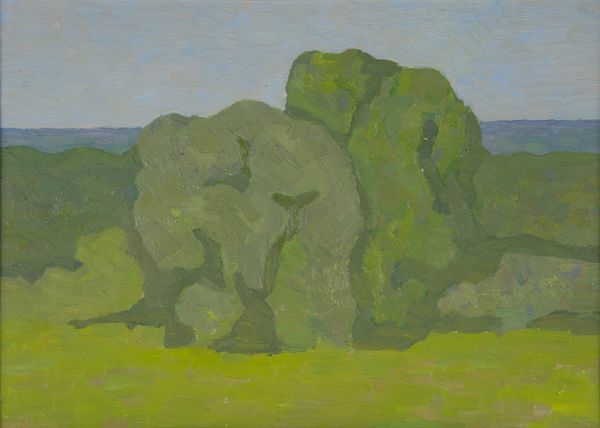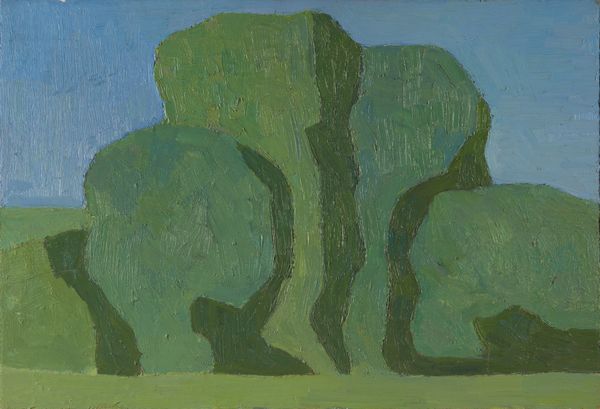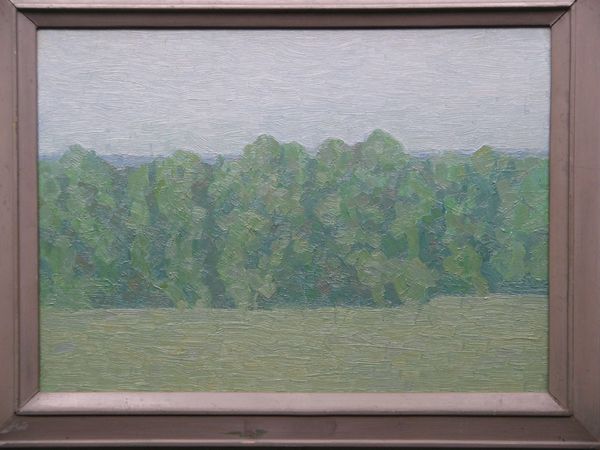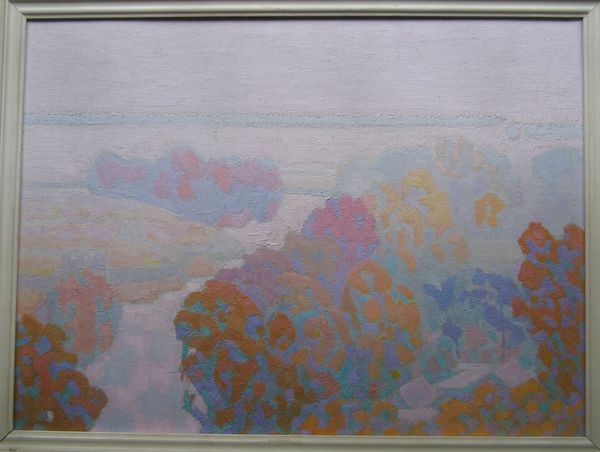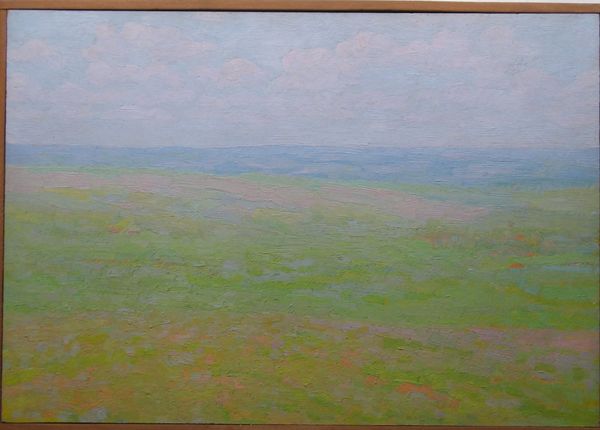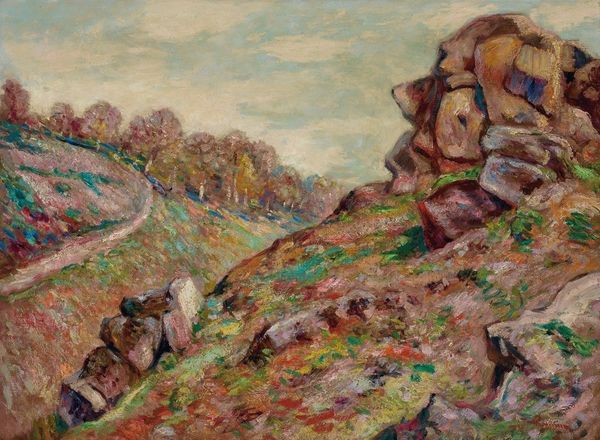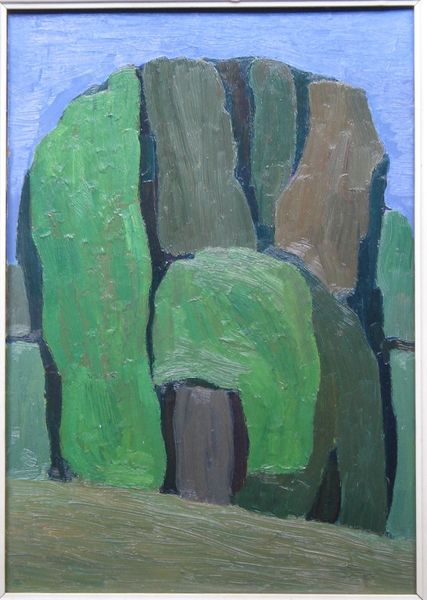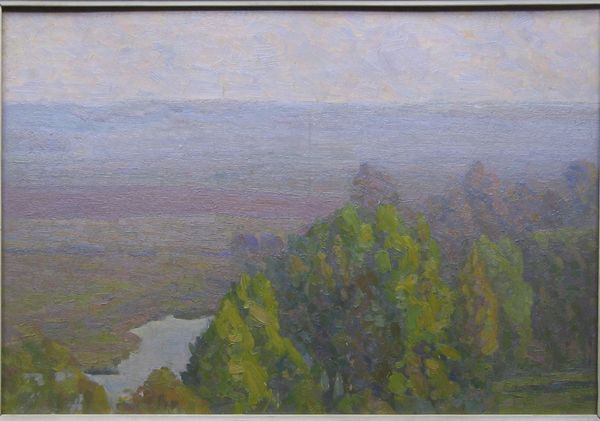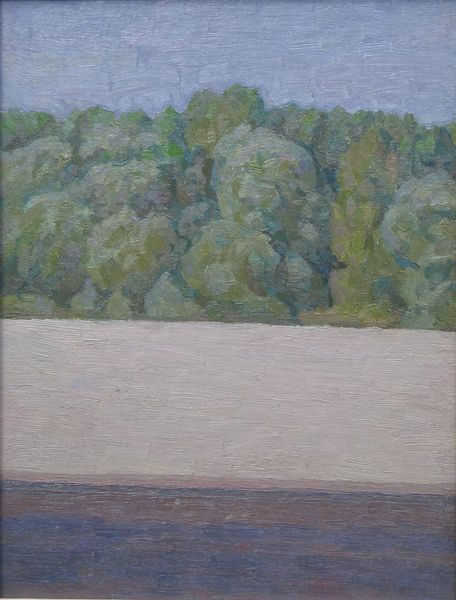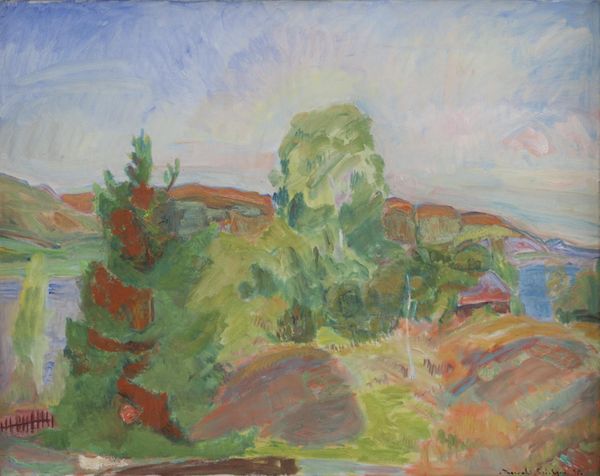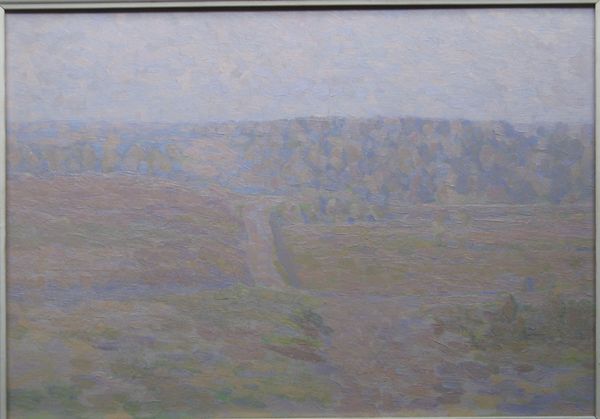
Copyright: Hryhorii Havrylenko,Fair Use
Curator: Here we have Hryhorii Havrylenko's "Trees" from 1975. It’s a fairly simple landscape painted in oil. Editor: Simple? I see quietude. The overwhelming green of the trees—they almost blend into a single mass. It feels like being swallowed by summer. Curator: I can see that. This work certainly resonates with Impressionist ideals, although his application feels more... reserved than some of the flashier works from that period. You’ve got realism, certainly, but he pushes at those boundaries. Editor: Yes, exactly! The individual brushstrokes are evident. It’s almost tactile—you can practically feel the impasto. And yet, from a distance, it coalesces into these massive, silent forms. Does that make sense? Curator: It does. Consider what it meant to depict the Ukrainian landscape at that time. The artist chooses to highlight nature, almost devoid of any human presence, focusing on timeless, universal themes rather than overt political statements. In terms of landscape painting and modernism this approach can also be seen as an understated act. Editor: Understated, but loaded, wouldn’t you say? Green for hope, growth, persistence? This picture almost breathes—or is it the stillness before a storm? Either way, it invites you in for contemplation and even perhaps some catharsis through meditation and observation. Curator: And there's always that tension, of course, between idealized depictions and realities on the ground. Did this art reach a wide public? To what extent was this artist shaping an idealized Ukrainian identity? The painting hangs in the National Art Museum of Ukraine today, which tells a particular part of the story. Editor: I find I appreciate even more of its complexities hearing the way those institutions impact its meaning. And looking at it again—yes, perhaps even in its green depths, there's room to discover a whole world, for better or worse, with endless possibilities. Thank you, it’s really been special for me, understanding art by focusing on observation first and context later.
Comments
No comments
Be the first to comment and join the conversation on the ultimate creative platform.
